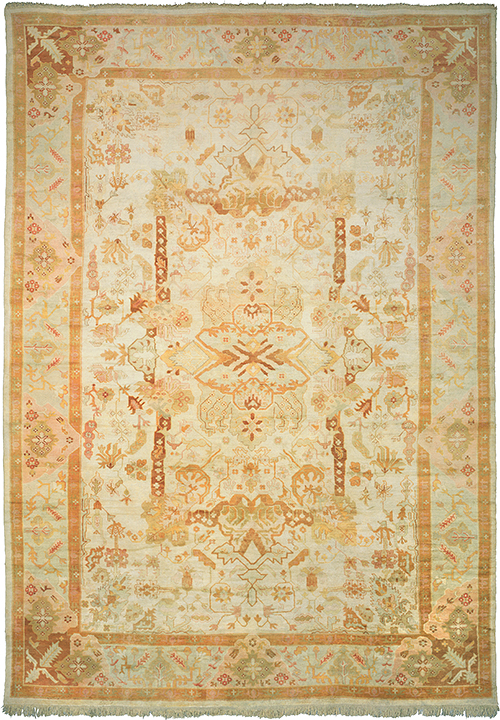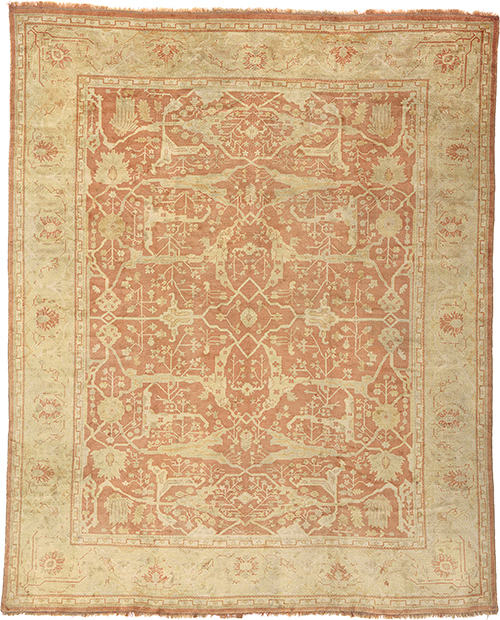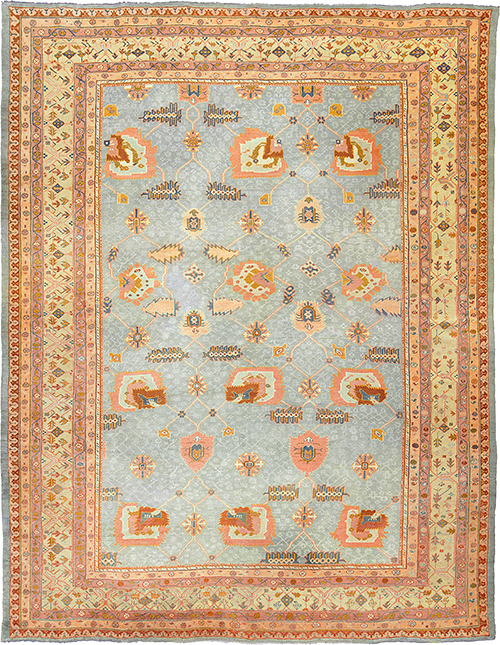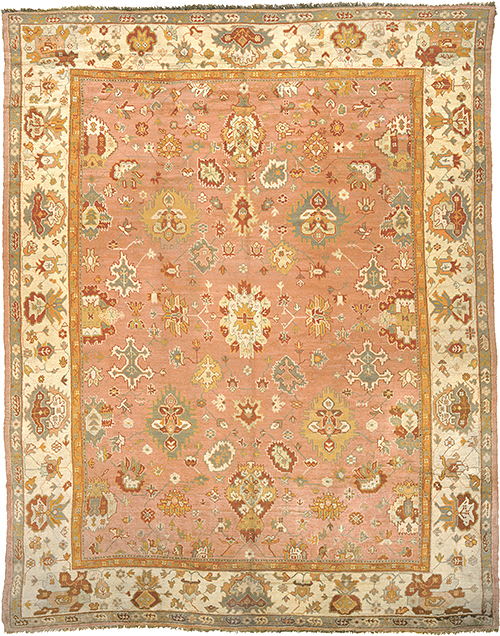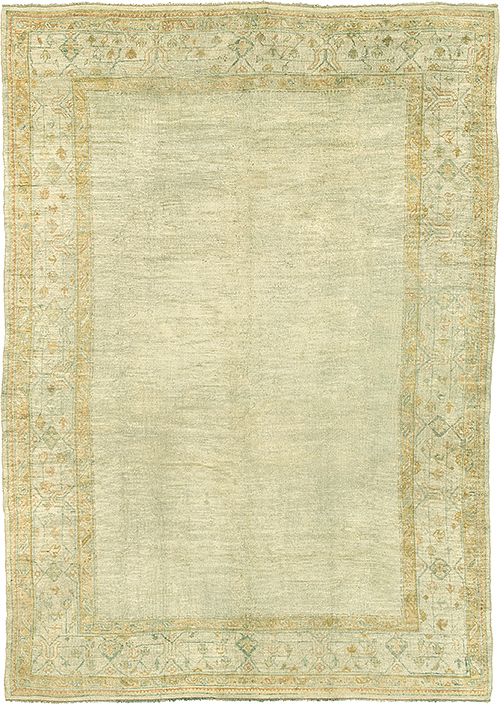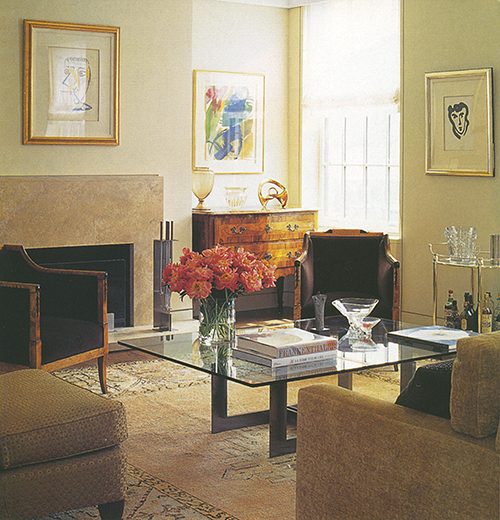November 14, 2018
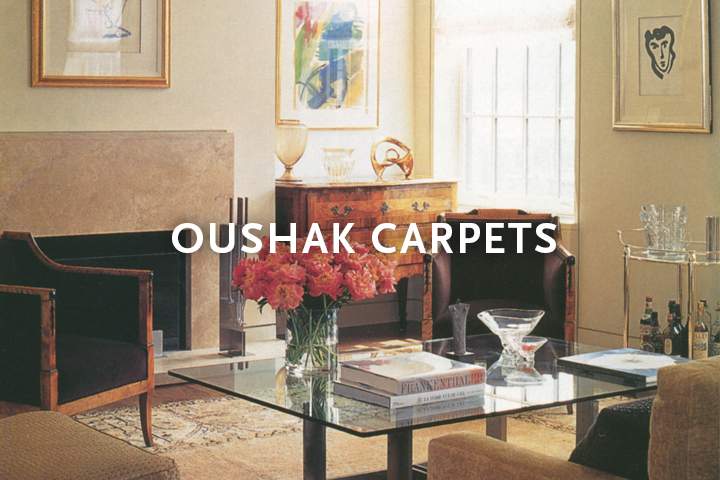
Elle Decor, January 2005. Eugene Kohn and Barbara Shattuck Kohn living room, New York, NY. Interior design by Eugene Kohn.
As early as the beginning of the sixteenth century the western Anatolian town of Ushak was producing fine carpets and textiles for the imperial Ottoman court. These early carpets fused traditional Persian design elements from the neighboring Safavid empire with a new Ottoman Turkish sensibility that stressed geometry and abstract floral ornament over pictorial and figural representations.
FJ Hakimian Borlou Carpet #04145. Turkey, 1890. 21'4" x 14'9" (650 x 450 cm)
FJ Hakimian Oushak Carpet #04002. Turkey, 1880. 17'10" x 14'3" (544 x 434 cm)
Situated on the eastern Mediterranean and bordering Asia and Europe, Turkey has always been a center for cultural fusion. Ushak is located approximately one hundred miles from the Aegean coast and is arguably the most eminent of the traditional weaving centers in western Anatolia. Carpets from this town are known in Europe and North America by the French spelling, Oushak. Indeed, these rugs have been desirable in Western markets ever since the Renaissance when Italian merchants brought them in large quantities to European markets. Anatolian carpets, many originating in Ushak, are even depicted in the paintings of such sixteenth century European masters as Lorenzo Lotto and Hans Holbein the Younger.
FJ Hakimian Oushak Carpet #04153. Turkey, 1890. 16'6" x 13'0" (503 x 396 cm)
Provenance: Herrgard utanfor Gavle
FJ Hakimian Oushak Carpet #04006. Turkey, 1880. 17'6" x 13'10" (533 x 422 cm)
Of course, as might be expected, Oushak carpets have undergone a steady evolution from the fifteenth to the nineteenth century. Perhaps the most significant development occurred in the late nineteenth in response to European patronage. As the Victorian taste for the ostentatious and heavily ornamented grew out of fashion the weavers of Oushak and other producers in western Anatolia catered to new sensibilities with freer more open field backgrounds and an added emphasis on negative space. In addition, Oushak carpets of the nineteenth century are particularly renowned for the softness and luminescence of their wool and their warm colors. A palette of ivory, creams, apricots and salmon reflected by their supple wool creates a glow that unifies interiors. Indeed, in an antique carpet this softness and luminescence has been enhanced by a patina created by over a hundred years of use. With their pleasing floral vegetal ornament, reminiscent both of the finest carpets from the classical period and fin de siecle European refinement, Oushak carpets continue to be some of the most desirable decorative pieces on the market today.
....
Aslanapa, Oktay Turkish Arts: Seljuk and Ottoman Carpets, Tiles and Miniature Paintings (Istanbul: 1961)
Bloom, Jonathan & Sheila Blair Velvets and Carpets: The Arts of the Loom in Islamic Arts (London: 1997)
Erdmann, Kurt Weniger bekante Uschak-Muster in Kunst des Orients, vol. 4 (1963), pp. 79-97
Seven Hundred Years of Oriental Carpets (Berkeley: 1970)
Ellis, Charles Grant Oriental Carpets in the Philadelphia Museum of Art (Philadelphia: 1988)
Ydema, Onno Carpets and Their Dating in Netherlandish Paintings (Leiden: 1991)
FJ Hakimian Oushak Carpet #04157. Turkey, 1890. 15'8" x 11'2" (478 x 340 cm)

